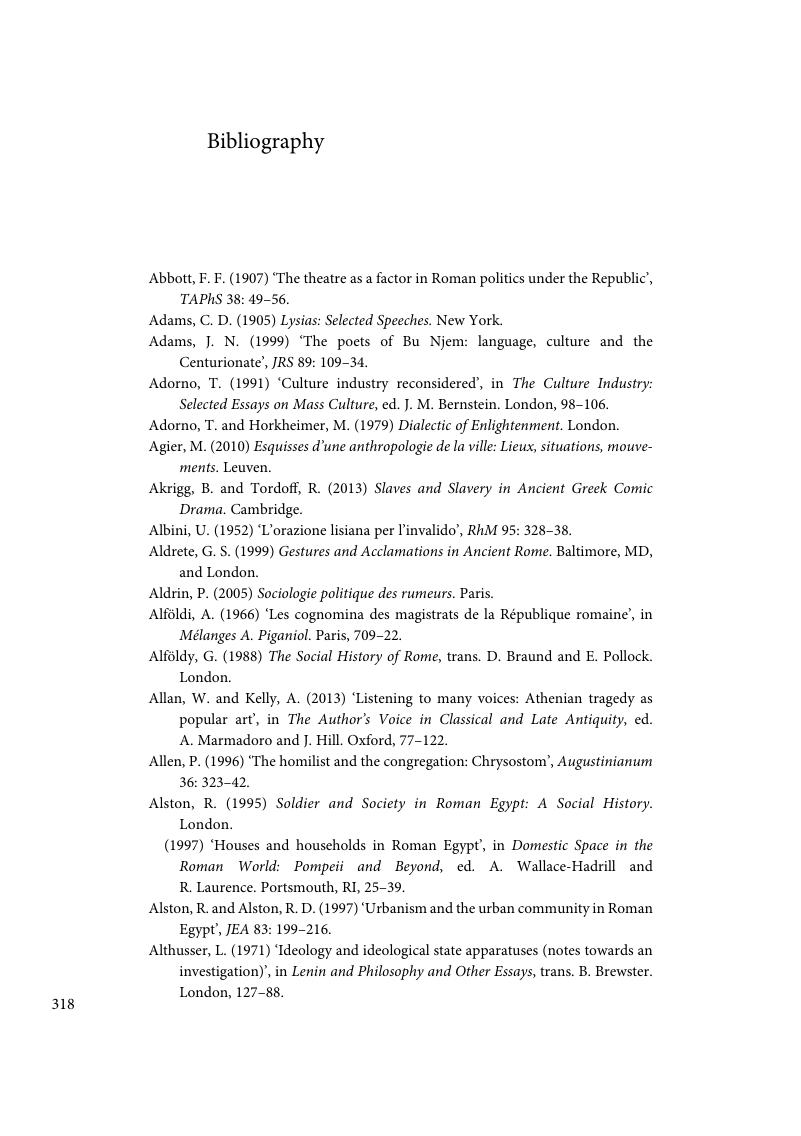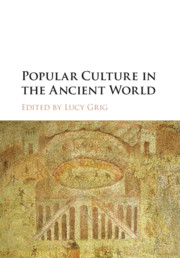Book contents
- Popular Culture in the Ancient World
- Popular Culture in the Ancient World
- Copyright page
- Contents
- Figures
- Contributors
- Acknowledgements
- Abbreviations
- 1 Introduction: Approaching Popular Culture in the Ancient World
- Part I Classical Greece
- Part II Rome
- Part III The Roman Empire: Greece, Rome and Beyond
- Part IV Late Antiquity
- Bibliography
- Index
- References
Bibliography
Published online by Cambridge University Press: 04 July 2017
- Popular Culture in the Ancient World
- Popular Culture in the Ancient World
- Copyright page
- Contents
- Figures
- Contributors
- Acknowledgements
- Abbreviations
- 1 Introduction: Approaching Popular Culture in the Ancient World
- Part I Classical Greece
- Part II Rome
- Part III The Roman Empire: Greece, Rome and Beyond
- Part IV Late Antiquity
- Bibliography
- Index
- References
Summary

- Type
- Chapter
- Information
- Popular Culture in the Ancient World , pp. 318 - 364Publisher: Cambridge University PressPrint publication year: 2016



